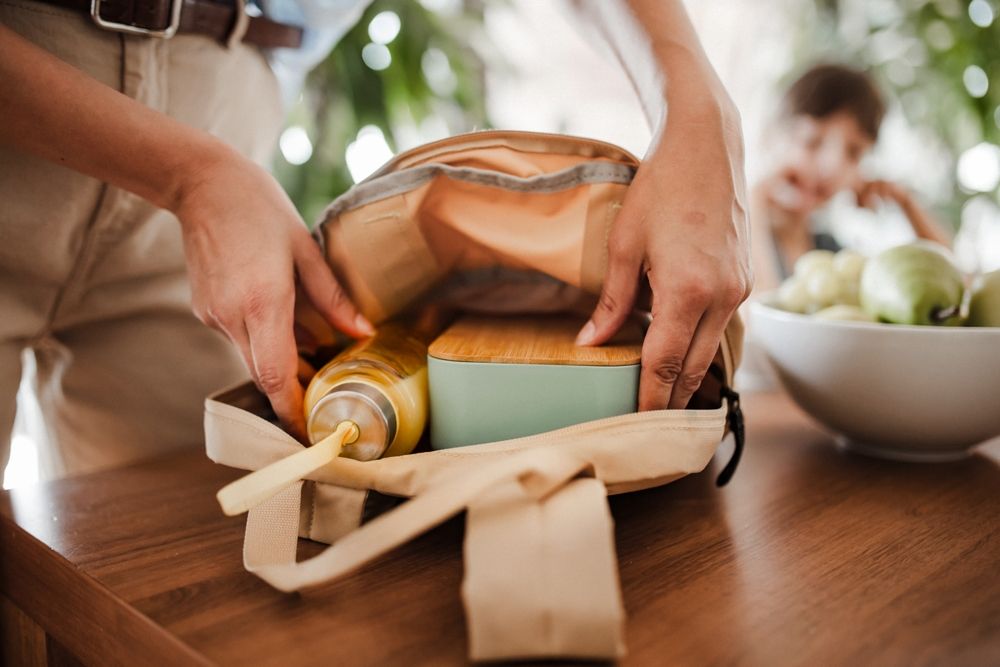Packing school lunches is a daily ritual for parents, but it often comes with a hidden financial strain. Between rising grocery prices, picky eaters, and the pressure to provide nutritious yet appealing meals, the cost of school lunches can add up quickly. Fortunately, saving money doesn’t mean sacrificing quality. With smart planning, creative strategies, and simple swaps, you can pack healthy, tasty lunches your kids will actually eat—without overspending.
The Cost of Convenience
Prepackaged lunch kits, single-serving snacks, and bottled drinks might seem like lifesavers on busy mornings, but they come at a premium. Buying convenience items regularly can double or even triple your weekly lunch costs.
Budget-friendly shift: Buy in bulk and portion out snacks yourself. A large bag of pretzels or baby carrots costs far less than multiple single-serve packs. Reusable containers make it easy to divide portions while cutting down on waste.
Plan Lunches Ahead
Last-minute lunch packing often leads to expensive choices. Planning ahead helps control costs and reduces stress.
Tips for planning:
-
Make a weekly menu so you know exactly what to buy.
-
Prepare ingredients the night before to avoid rushed spending in the morning.
-
Use leftovers creatively—last night’s chicken can become today’s wraps.
Meal planning also ensures variety, reducing the risk of wasted food when kids get bored.
Focus on Affordable Staples
Nutritious lunches don’t have to be complicated. Affordable staples can form the backbone of your child’s meals.
Cost-effective options:
-
Protein: Hard-boiled eggs, beans, tuna, or sliced turkey.
-
Carbs: Whole grain bread, pasta, or rice.
-
Veggies: Carrots, cucumbers, and bell peppers.
-
Fruits: Apples, bananas, and seasonal produce.
These ingredients are inexpensive, versatile, and easy to prepare in bulk.
Buy Seasonal and Local Produce
Fresh produce is essential for healthy lunches, but prices fluctuate. Buying in season helps you save significantly.
Smart produce habits:
-
Shop farmers’ markets for affordable local fruits and vegetables.
-
Stock up when prices are low and freeze extras for later.
-
Incorporate less expensive produce like cabbage, oranges, and apples.
Kids benefit from variety, and parents benefit from lower costs.
Limit Expensive Packaged Drinks
Juice boxes, sports drinks, and flavored waters seem like lunchbox essentials, but they’re pricey and often full of sugar.
Money-saving swap: Send a reusable water bottle. For variety, infuse water with lemon, cucumber, or berries. Not only does this save money, but it also promotes healthier hydration.
Reuse and Repurpose Containers
Disposable plastic bags and prepackaged containers may seem cheap, but over time, they add unnecessary expense.
Affordable alternatives:
-
Invest in a set of reusable containers in multiple sizes.
-
Use insulated lunch bags and ice packs to keep food fresh.
-
Mason jars are perfect for layered salads, pasta, or yogurt parfaits.
Reusable supplies save money long-term and reduce waste.
Make Snacks at Home
Store-bought granola bars, muffins, and fruit snacks are convenient but costly. Making them at home allows you to control both ingredients and price.
Easy homemade snacks:
-
Bake muffins in bulk and freeze extras.
-
Make your own trail mix with bulk nuts, seeds, and dried fruit.
-
Popcorn made at home is far cheaper than single-serve bags.
Homemade snacks often taste better and give kids more variety.
Involve Kids in Lunch Prep
When kids help choose and prepare their lunches, they’re more likely to eat them, which means less food waste—and wasted money.
Kid-friendly prep ideas:
-
Let them pick between two healthy snack options.
-
Have them assemble their own sandwiches or wraps.
-
Involve them in baking snacks on weekends.
This not only saves money but also teaches valuable life skills.
Shop Smart and Use Coupons
Strategic shopping stretches your lunch budget further.
Tips for smart shopping:
-
Compare store-brand items with name brands—quality is often similar at a lower price.
-
Use coupons and cash-back apps for staples like bread, cheese, and produce.
-
Stock up on non-perishables when they’re on sale.
Being intentional about shopping prevents overspending.
Common Mistakes Parents Make
-
Overpacking lunches: Kids may not eat everything, leading to food waste.
-
Buying too many single-serve items: Costs skyrocket without realizing it.
-
Ignoring leftovers: Perfectly good food gets thrown away.
-
Not rotating foods: Kids get bored, and uneaten lunches end up in the trash.
Avoiding these pitfalls keeps costs down and kids satisfied.
Sample Budget-Friendly Lunch Ideas
-
Chicken wrap with lettuce, tomato, and shredded cheese, plus an apple and popcorn.
-
Pasta salad with veggies and beans, paired with a homemade muffin.
-
Rice bowl with scrambled egg, soy sauce, and frozen veggies, plus orange slices.
-
DIY lunch box: Whole wheat crackers, turkey slices, cheese cubes, and carrot sticks.
Each of these lunches uses inexpensive staples, keeps prep simple, and offers balanced nutrition.
Saving money on school lunches for kids is less about cutting corners and more about making smart, sustainable choices. By planning ahead, buying in bulk, focusing on affordable staples, and involving your kids in preparation, you can provide nutritious and appealing meals at a fraction of the cost of convenience foods. With a little creativity and consistency, packing lunches becomes less of a financial burden and more of an opportunity to instill healthy, money-savvy habits in your children.

